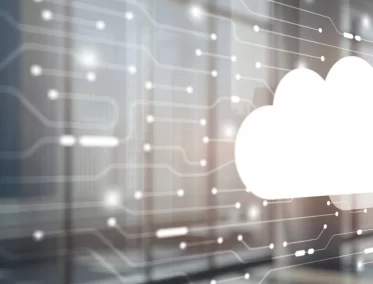| Key Takeaways
Delaying your JD Edwards upgrade increases compliance, security, and operational risks.
Outdated systems inflate maintenance costs and limit AI and automation adoption.
Modern releases support hybrid cloud, intelligent orchestration, and autonomous CNC capabilities.
Incremental modernization helps organizations avoid disruption while staying competitive.
A structured upgrade roadmap aligns IT investments with business outcomes. |
For many organizations, JD Edwards (JDE) remains the backbone of core financial, operational, and supply chain processes. Yet, despite its reliability, the platform evolves continuously, and delaying a JD Edwards Upgrade can quietly erode performance, compliance, and business agility.
While upgrade projects can seem daunting, postponing them often introduces greater risks than the effort of modernization itself. Enterprises that hesitate to move forward are finding themselves constrained by legacy limitations just as their competitors embrace AI-driven automation, cloud scalability, and advanced Orchestrator workflows.
In this article, we’ll explore what’s really at stake when you delay your JD Edwards upgrade, the compounding impact on your infrastructure and teams, and why modernization is no longer a matter of “if,” but “when.”
1. Falling Behind: The Pace of Change in JD Edwards
JD Edwards has evolved from a traditional ERP to a modern, intelligent enterprise platform capable of adapting to AI, automation, and multi-cloud environments. Oracle’s continuous innovation model ensures that features from Releases 24 and 25, such as Process Recorder enhancements, Orchestrator upgrades, and improved security frameworks, keep your environment resilient and future-ready.
However, organizations still running older releases face a widening capability gap:
- No access to AI-assisted features such as intelligent recommendations or adaptive orchestration.
- Incompatibility with modern integrations and APIs.
- End-of-support risks, where bug fixes and security patches are discontinued.
Every skipped update compounds technical debt, leaving IT teams managing workarounds instead of driving innovation.
2. Security and Compliance Exposure
In today’s regulatory environment, delaying a JD Edwards upgrade is a compliance and security liability.
Outdated systems are more vulnerable to:
- Unpatched vulnerabilities that expose financial and operational data.
- Limited audit traceability, making it harder to meet regulatory standards.
- Incompatibility with compliance mandates, such as Brazil’s CBS/IBS reform or industry-specific reporting frameworks.
- Modern JDE releases integrate continuous compliance monitoring and enhanced role-based access controls, vital for organizations in regulated industries.
By contrast, unsupported versions often require costly manual interventions to meet new tax or audit obligations, increasing both risk and operational overhead.
3. Rising Maintenance Costs and Operational Inefficiency
Every year you delay your JD Edwards upgrade, your maintenance and support costs rise — often without delivering any new business value.
Older systems:
- Demand more frequent troubleshooting.
- Require specialized CNC expertise that’s increasingly scarce.
- Have limited compatibility with modern infrastructure (e.g., OCI, AWS, Azure).
- Over time, the cost of maintaining these environments can surpass that of upgrading.
Meanwhile, newer versions offer:
- Cloud-readiness, reducing infrastructure complexity.
- AI-enabled Orchestrator workflows to replace repetitive tasks.
- Automated patching and proactive monitoring, freeing up IT resources for strategic initiatives.
The longer you delay, the more you pay; not just in dollars, but in lost opportunity.
4. Technical Debt and Integration Challenges
Outdated JDE instances often become “islands” of functionality that struggle to integrate with modern tools. This fragmentation impacts both business users and IT teams:
- Legacy code and customizations make upgrades more difficult.
- Data synchronization across systems becomes unreliable.
- Business process orchestration is limited to manual workflows.
A proactive JD Edwards upgrade, by contrast, lays the foundation for integration-friendly architectures, connecting seamlessly with analytics platforms, automation tools, and AI-driven insights engines.
This integration is particularly critical in the AI era, where data interoperability drives smarter forecasting, supply chain visibility, and cost control.
5. The Human Factor: Change Fatigue vs. Change Readiness
One of the most overlooked risks of postponing upgrades is organizational inertia. The longer teams work within outdated environments, the harder it becomes to transition. Users get accustomed to inefficient processes, and knowledge gaps widen.
When you finally do upgrade, this inertia amplifies:
- Retraining costs increase.
- Resistance to change rises.
- Knowledge of legacy workflows conflicts with modern best practices.
By adopting a continuous innovation mindset, organizations can make incremental improvements rather than disruptive overhauls. Modernization doesn’t have to mean a full reimplementation, it can be a structured, manageable evolution aligned with your business roadmap.
6. Missing Out on AI and Automation Opportunities
Oracle continues to infuse JD Edwards with autonomous and AI-driven capabilities that empower data-driven decision-making and predictive operations.
Newer releases enable:
- Orchestrator-based automations that replace manual tasks in finance, supply chain, and HR.
- Proactive CNC monitoring that detects performance anomalies before they escalate.
- Machine learning models that improve forecasting, demand planning, and maintenance.
Without upgrading, you remain locked out of these intelligent features — effectively capping your organization’s ability to optimize processes or scale efficiently.
Modernizing your JD Edwards environment means future-proofing your ERP for autonomous operations and cloud-driven agility.
7. Cloud Readiness: The Future-Proof Foundation
Delaying your JD Edwards upgrade also delays your cloud journey. Whether you plan to remain hybrid or move workloads to OCI, AWS, Azure, or GCP, modernization is the first step toward scalability and resilience.
Benefits of upgrading for cloud readiness include:
- Simplified CNC management through containerized deployments.
- Flexible infrastructure for development, testing, and DR.
- Improved performance through elastic scaling and automated resource allocation.
Moreover, cloud platforms enhance your testing and governance frameworks, enabling faster update cycles with less disruption.
8. Upgrade as a Strategic Advantage
A JD Edwards upgrade isn’t just a technical necessity, it’s a strategic advantage. Enterprises that modernize proactively position themselves to adapt faster, innovate more freely, and reduce the burden on IT and finance teams.
Modernization efforts unlock tangible value by combining:
- AI-enabled Orchestrator workflows that eliminate repetitive tasks.
- Autonomous CNC monitoring for predictive performance optimization.
- Hybrid cloud strategies that balance cost and control.
- Governance frameworks that maintain compliance through change.
When viewed through this lens, upgrading isn’t a cost center — it’s an investment in long-term agility.
Every delayed upgrade compounds risk, but with the right roadmap, your modernization journey can be structured, predictable, and ROI-driven. The key is knowing what to assess, when to act, and how to align your ERP strategy with business priorities.

9. How to Plan Your Next JD Edwards Upgrade
To minimize disruption and maximize ROI, take a phased approach:
- Assess Your Current Environment – Identify obsolete customizations and pain points.
- Evaluate Cloud and AI Readiness – Define where automation can deliver the greatest impact.
- Adopt a CNC Stability Framework – Implement proactive monitoring to prevent performance issues.
- Upgrade in Controlled Waves – Use testing automation to de-risk transitions.
- Train and Empower Users – Ensure adoption of new features and workflows.
This approach ensures your JD Edwards upgrade delivers sustainable benefits — not just a version change, but a transformation.
Frequently Asked Questions (FAQs)
- How often should I plan a JD Edwards upgrade?
Oracle’s continuous innovation model means smaller, more frequent updates are ideal — typically every 12–18 months — to stay current with security patches and feature enhancements.
- What’s the biggest risk of delaying a JD Edwards upgrade?
The biggest risks are compliance lapses, unsupported systems, and lost productivity due to outdated tools and manual processes.
- Is upgrading to the latest JDE release the same as moving to the cloud?
Not necessarily. However, modern releases make your environment cloud-ready, enabling seamless migration to OCI or other cloud platforms later.
- How can automation and Orchestrator help post-upgrade?
Orchestrator automates repetitive workflows — such as invoice validation or inventory reconciliation — freeing teams for strategic initiatives and improving process accuracy.
- How do I know if my JD Edwards environment needs modernization?
If your teams rely on manual workarounds, face frequent performance issues, or can’t access new capabilities, it’s time to evaluate your system through a JDE Modernization Assessment.
Final Thoughts
The risks of delaying your JD Edwards upgrade extend far beyond missed features — they affect every layer of your enterprise, from compliance and security to innovation and scalability.
Upgrading isn’t just about keeping up — it’s about moving ahead. With the right roadmap, AI-driven automation, and cloud-aligned strategies, your JD Edwards environment can evolve into a resilient, intelligent system that drives value for years to come.




